Wireless communication plays a significant role in day-to-day life. Besides communication, wireless technology has become an integral part of our daily activities. The transmission of data or information from one place to another wirelessly is referred to as wireless communication. This provides an exchange of data without any conductor through RF and radio signals. The information is transmitted across the devices over some meters to hundreds of kilometers through well-defined channels.
The term wireless refers to the communication or transmission of information over a distance without requiring wires, cables, or any other electrical conductors. Wireless communication is one of the important mediums of transmission of data or information to other devices. The Communication is set and the information is transmitted through the air, without requiring any cables, by using electromagnetic waves like radio frequencies, infrared, satellite, etc., in a wireless communication technology network.
Different types of signals are used in communication between the devices for wireless transmission of data. The following are the different electromagnetic signals used depending on their wavelength and frequency.
Types of Wireless Data Transmission
- Radio Frequency Transmission
- Infrared Transmission
- Microwave Transmission
- Lightwave Transmission
Radio Frequency Transmission
Radiofrequency is a form of electromagnetic transmission used in wireless communication. RF signals are easily generated, ranging 3kHz to 300GHz. These are used in wireless communication because of their property to penetrate through objects and travel long distances.
The radio system is one type of wireless data transmission, and it is a wireless media that transfers data by carrying electromagnetic waves with low frequencies to distant locations through an electrical conductor and an antenna. Ham radio enthusiasts share information and serve as emergency communication aids during disasters with their powerful amateur broadcasting equipment and can even communicate digital data over the radio spectrum.
Radio communication depends on the wavelength, transmitter power, receiver quality, type, size, and height of the antenna.
Drawbacks
- These are frequency-dependent
- These have a relatively low bandwidth for data transmission.
Infrared Transmission
Infrared radiations are electromagnetic radiations with longer wavelengths than visible light. These are usually used for short-range communications. These signals do not pass through solid objects.
Infrared is a media transmission system that transmits data signals through light-emitting diodes (LEDs) or Lasers. Infrared is electromagnetic energy at a wavelength that is longer than that of red light. The information cannot be traveled through obstacles in an infrared system but can be inhibited by light. One type of infrared is the point-to-point system in which transmission is possible between two points limited to a range and line of sight.
The signal frequency to transmit in a point-to-point system is 100 GHz to 1,000 terahertz (THz), and the speed ranges from 100 Kbps to 16 Mbps. Another method of transmission of infrared includes the broadcast system – and, in this method, reflective material or a transmission unit amplifies and retransmits a data signal to several other units. The normal frequency of an infrared broadcast system is 100 GHz to 1,000 THz with a limited speed of 1 Mbps.
Examples like Television remote control, mobile data sharing.
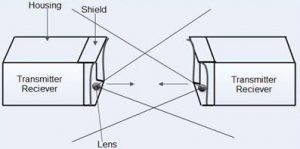
Infrared Transmission
Microwave Transmission
Microwaves are the form of electromagnetic transmission used in wireless communication systems. The wavelength of microwaves ranges from one meter to one millimeter. The frequency varies from 300MHz to 300GHz. These are widely used for long-distance communications and are relatively less expensive. Microwave is an effective type of wireless data transmission that transfers information using two separate methods. One method which is used to transmit data through the wireless media of a microwave is the satellite method that transmits information via a satellite that orbits 22,300 miles above the
Earth. Stations on the ground send and receive data signals to and from the satellite with a frequency ranging from 11 GHz to 14 GHz and with a transmission speed of 1 Mbps to 10 Mbps. Another method is a terrestrial method, in which two microwave towers with a clear line of sight between them are used ensuring no obstacles to disrupt that line of sight. For the purpose of privacy, it is used often. The frequency of data transmission for terrestrial systems is typically 4 GHz to 6 GHz or 21 GHz to 23 GHz, and the speed is usually 1 megabit per second (Mbps) to 10 Mbps.
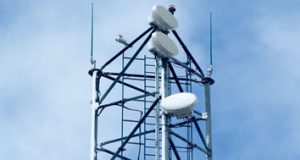
Microwave Transmission Node
Drawbacks
- The microwave does not pass through buildings.
- Bad weather affects signal transmission.
- These are frequency-dependent.
Lightwave Transmission
Light is electromagnetic radiation with a wavelength ranging between infrared radiations and ultraviolet radiations. The wavelength ranges from 430 to 750THz. These are unguided optical signals such as lasers and are unidirectional.
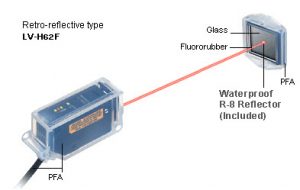
Lightwave Transmission
Drawbacks
- These signals cannot penetrate through rain and fog.
- The laser beam gets easily diverted by air.
Wireless Phones
The evolution of cellular networks is enumerated by generations. Many different users communicate across a single frequency band through Cellular and cordless phones. Cellular and cordless phones are two more examples of devices that make use of wireless signals.
Cordless phones have a limited range but cell phones typically have a much larger range than the local wireless networks since cell phones use large telecommunication towers to provide cell phone coverage. Some phones make use of signals from satellites to communicate, similar to Global Positioning System (GSP) devices.
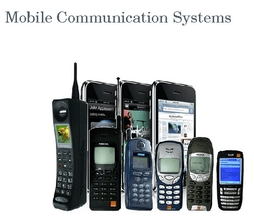
Wireless Phones
Other Devices
Anything that uses radio signals to communicate can be considered as a wireless device. Common devices such as garage door openers, baby monitors, certain video game consoles, and walkie-talkies make use of wireless technology.
Wireless Adapters
Wireless adapters are hardware devices that are installed inside computers which enables wireless connectivity. If a computer does not have a wireless adapter, it will not be able to connect to a router in order to access the Internet. Some computers have wireless adapters built directly into the motherboard, while it is also possible to install stand-alone wireless adapters to add wireless capability to a computer that doesn’t have a built-in facility.
Wireless Repeater
A wireless repeater is a wireless networking device that is used to extend the range of a wireless router. A repeater receives wireless signals and amplifies the strength of the signals, and then re-emits them. The strength of the signal can be increased by placing a repeater between the router and the computer connected to the router.
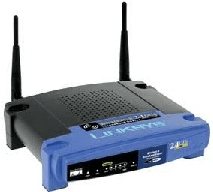
Wireless Repeater
Types of Wireless Communication Technologies
In recent days, wireless communication technology has become an integral part of several types of communication devices as it allows users to communicate even from remote areas. The devices used for wireless communication are cordless telephones, mobiles, GPS units, ZigBee technology, wireless computer parts, and satellite television, etc. Wireless communication technology is categorized into different types depending on the distance of communication, the range of data, and the type of devices used. The following are the different types of wireless communication technologies.
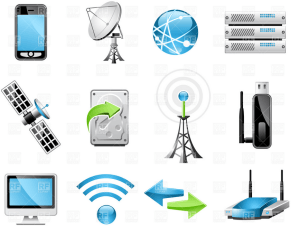
Types of Communication Technologies
Satellite
- Radio and Television Broadcasting
- Radar Communication
- Satellite communication
- Cellular Communication
- Global Positioning System
- WiFi
- Bluetooth
- Radio Frequency Identification
Radio
Radio communication was one of the first wireless technology developed and it is still in use. The portable multi-channel radios allow the user to communicate over short distances whereas citizen band and maritime radios provide communication services over long distances for truckers and sailors.
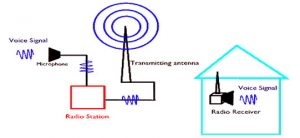
Radio Transmission
Mostly radio broadcasts sound through the air as radio waves. Radio has a transmitter that transmits the data in the form of radio signals to the receiver antenna.
To broadcast common programming stations are associated with the radio networks. The broadcast happens either in simulcast or syndication or both forms. Radio broadcasting may be done via cable FM, and satellites over long distances at up to two megabits/Sec.
Cellular
A cellular networkElect uses encrypted radio links, modulated to allow many users to communicate across the single frequency band. As the individual handsets lack significant broadcasting power, the system depends on a network of cellular towers which are capable of triangulating the source of any signal and handing reception duties off to the most suitable antenna.
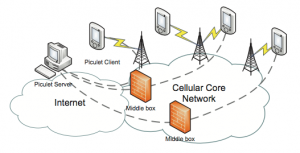
Cellular
The data transmission over cellular networks is possible with modern 4G systems capable of speeds reaching that of wired DSL. Cellular companies charge their customers by a minute of their voice and by the kilobytes for data.
Satellite
Satellite communication is a wireless technology having significant importance across the globe. They have found widespread use in specialized situations.
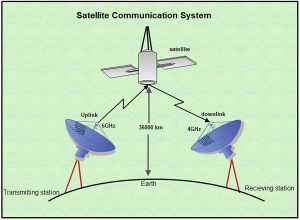
Satellite Communication System
The devices using satellite technology to communicate directly with the orbiting satellite through radio signals.
This allows users to stay connected virtually from anywhere on the earth. Portable satellite phones and modems have powerful broadcast features and reception hardware than cellular devices due to the increased range.
Satellite communication consists of a space segment and a ground segment. When the signal is sent to the satellite through a device, the satellite amplifies the signal and sent it back to the receiver antenna which is located on the earth’s surface. The ground segment consists of a transmitter, receiver, and the space segment, which is the satellite itself.
Wi-Fi
Wi-Fi is low-cost wireless communication technology. A WiFi setup consists of a wireless router which serves a communication hub, linking portable device with an internet connection. This network facilitates the connection of many devices depending on the router configuration. These networks are limited in range due to the low power transmission, allowing the user to connect only in close proximity.
Wi-Fi is a form of low-power wireless communication used by many electronic devices such as laptops, systems, smartphones, etc. In a Wi-Fi setup, a wireless router serves as the communication hub. These networks are extremely limited in range due to the low power of transmissions allowing users to connect only within close proximity to a router or signal repeater. Wi-Fi is common in home networking applications which provides portability without any need for cables. Wi-Fi networks need to be secured with passwords for security purposes in order not to be accessed by others.

wifi
This network facilitates the connection of many devices depending on the router configuration. These networks are limited in range due to the low power transmission, allowing the user to connect only in close proximity.
Please refer to this link to know more about WiFi MCQs and GPS MCQs.
Please refer to this link to know more about Bluetooth MCQs
Advantages
- Ease of Integration and Convenience – The wireless nature of such networks allows users to access network resources from nearly any convenient location.
- Mobility – With the emergence of public wireless networks, users can access the internet even outside their normal working environment.
- Expandability – Wireless networks are capable of serving a suddenly increased number of clients with the existing equipment. In a wired network, additional clients require additional wiring.
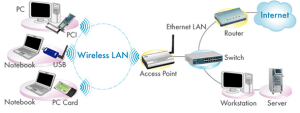
Wireless Networking WiFI
Disadvantages
- Wireless LANs may not be desirable for a number of reasons.
- Radio Frequency transmission and wireless networking signals are subjected to a wide variety of interference including the complex propagation effects that are beyond the control of the network administrator.
- Security Problems – Wireless networks may choose to utilize some of the various encryption technologies.
- The range will be insufficient for a larger structure – and, in order to increase its range, repeaters or additional access points have to be purchased.
- The speed on most wireless networks will be slower than the slowest common wired networks.
- The installation of an infrastructure-based wireless network is complex to set up.
Wireless Networking
Wireless Networking technologies connect multiple computers, systems, and devices together without requiring wires or cables: a wireless local area network or WLAN comes under Wi-Fi.
Bluetooth Technology
Bluetooth technology allows you to connect a variety of different electronic devices wirelessly to a system for the transfer and sharing of data and this is the main function of Bluetooth. Cell phones are connected to hands-free earpieces, wireless keyboards, mouse and mike to laptops with the help of Bluetooth as it transmits information from one device to other devices. Bluetooth technology has many functions, and it is used most commonly in the wireless communications market.
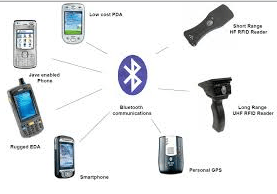
Bluetooth Technology
Features
- Bluetooth technology uses radio waves to communicate between devices. Most of these radio waves have a range of 15-50 feet.
- According to the official Bluetooth website, Bluetooth uses a low-power signal with a maximum range of 50 feet with sufficient speed to enable the transmission of data.
- The pairing process identifies and connects any two devices to each other. It also prevents interference from other non-paired Bluetooth devices in the area.
- It uses maximum power only when it is required, thus preserving battery life.
ZigBee
ZigBee is a wireless communication standard designed to address the unique needs of low-power, low-cost wireless sensor, and control networks. ZigBee can be used almost anywhere, as it is easy to implement and requires little power to operate. Zigbee has been developed looking into the needs of the communication of data with a simple structure like the data from the sensors.
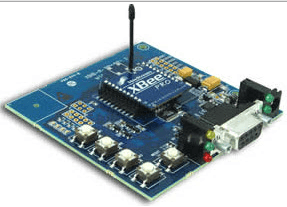
Zigbee Technology
Features
- ZigBee devices are designed for low-power consumption.
- ZigBee is used in Commercial Applications like sensing and monitoring applications.
- ZigBee uses very low power and extremely long device battery life.
- ZigBee gives the flexibility to do more with reliable wireless performance and battery operation.
WiMAX
There are wireless broadband systems that offer fast Web surfing without being getting connected through cable or DSL (An example of wireless broadband is WiMAX). Although WiMAX can potentially deliver data rates of more than 30 Megabits per second, yet the providers offer average 0 data rates of 6 Mbps and often deliver less, making the service significantly slower than the hard-wired broadband.
The actual cost of the data available using WiMAX widely varies with the distance from the transmitter. WiMAX is also one of the versions of 4G wireless available in phones as Sprint’s 4G technology.
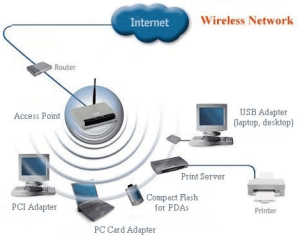
Advantages and Disadvantages of Wireless Communications
Advantages
- Information can be transmitted quickly with high speed and accuracy.
- The internet can be accessed from anywhere, at any time without any cables or wires.
- Emergency situations can be alerted through wireless communication.
- Wireless, no bunches of wire running out.
- Communication can reach where wiring is not feasible and costly.
Disadvantages
- An Unauthorized person can easily misuse the wireless signals which spread through the air.
- It is very important to secure the wireless network to protect information.
- High cost to set up the infrastructure.
- Wireless communication is influenced by physical constructions, climatic conditions and interference from other wireless devices.
Applications Wireless Communication
Wireless communication has wide applications.
- Space
- Military
- Telecommunications
- Wireless Power Transmission
- IoT
- Radar communication
- Artificial intelligence
- Fiber optics
- Intelligent Transport Systems
Please refer to these links for
Telecommunication and Switching Systems MCQs
Therefore, this is all about Types of wireless communication and applications, these networks are one of the important technologies in the telecommunications market. WiFi, WiMax, Bluetooth, Femtocell, 3G and 4G are some of the most important standards of Wireless technology.
The information which is given in this article will be helpful to the viewers. Furthermore, any queries, suggestions or electronics projects, you can comment us by commenting in the comment section below. Here is a question for you “What are the disadvantages of Wireless Communication?”